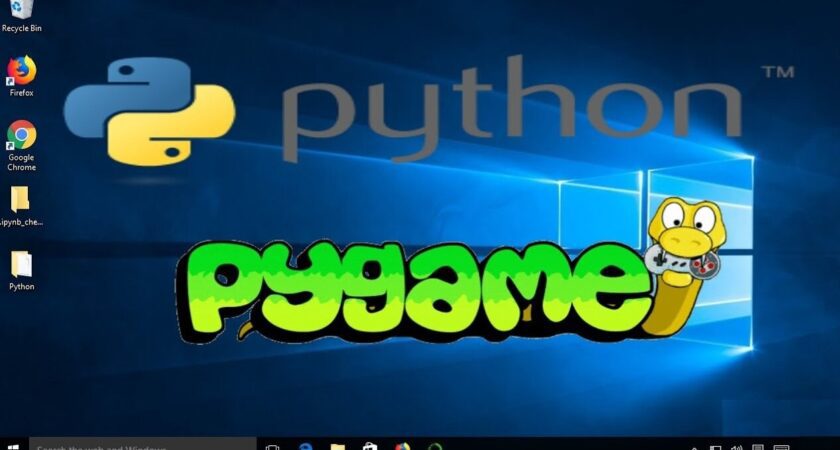Introduction to Pygame
In order to lean pygame You may wish to be familiar with the basics of the Python 3 programming language, or at least the basics of Programming in general
That said, this course begins at a slowish pace, and I do my best to explain everything at least the first time it shows up. PyGame can actually be a wonderful starting place for your journey in Python.
Don’t be afraid to ask questions!
Game creation in any programming language is very rewarding, and also makes for a great teaching tool. With game development, you often have quite a bit of logic, mathematics, physics, artificial intelligence, and other things, all of which come together for game creation. Not only this, but the topic is games, so it can be very fun.
Many times people like to visualize the programs they are creating, as it can help people to learn programming logic quickly. Games are fantastic for this, as your are specifically programming everything you see.
Pygame Fundamentals
Python modules called Pygame are used to create two-dimensional video games. Due to its ease of use and learning curve, it is a popular option for novices. Many functionalities are available in Pygame, such as:
- Graphics: Pygame can be used to draw shapes, images, and text on the screen.
- Input: Pygame can be used to handle input from the keyboard, mouse, and joystick.
- Sound: Pygame can be used to play sound effects and music.
- Collision detection: Pygame can be used to detect when objects collide with each other.
This is just a basic overview of it. There are many more things that you can do with it.
Tips for Game Design
The process of creating a game is difficult and requires a lot of imagination and problem-solving. Here are some pointers for using Pygame in game design:
- Start with a simple idea. Don’t try to create a complex game right away. Start with a simple idea that you can easily implement.
- Break down your game into small tasks. This will make the game seem less daunting and will help you stay on track.
- Don’t be afraid to experiment. Try new things and see what works.
- Test your game often. This will help you identify and fix bugs.
- Get feedback from others. Ask friends and family to play your game and give you feedback.
- Don’t give up. Game development can be challenging, but it’s also very rewarding.
Here are some additional tips specifically for using Pygame:
- Use a consistent coding style. This will make your code easier to read and maintain.
- Use comments to explain your code. This will make your code easier to understand for others.
- Use libraries to help you with common tasks. There are many libraries available for Pygame that can save you time and effort.
- Don’t be afraid to ask for help. There are many resources available online and in forums where you can get help with Pygame.
By following these tips, you can create a fun and engaging game with Pygame.
Advanced Pygame Techniques
As you construct games with Pygame, you’ll come across increasingly complex methods to improve your creations. Here are some sophisticated Pygame methods to investigate:
- Collision Detection: To guarantee that objects react to player actions and bounce off walls in a realistic manner, implement collision detection.
- Animation: Make fluid animations to give your game’s objects and characters life. Make use of interpolation, flipping, and sprite sheets.
- Particle Effects: Particle effects can improve the visual impact of your game. To increase realism and excitement, mimic glitter, smoke, or explosions.
- Sound Effects and Music: Use synchronized sound effects and music to enhance the ambiance of your game. Make an engaging aural experience and use sound cues to reinforce behaviors.
Conclusion
A well-liked Python package for creating multimedia and games is called Pygame. It provides a feature-rich framework that is easy to use for developing 2D games and interactive apps. Even though it might not have the power and functionality of more sophisticated game engines, it’s still a great option for novices and straightforward projects.Read about our other post at codingshikho.com
